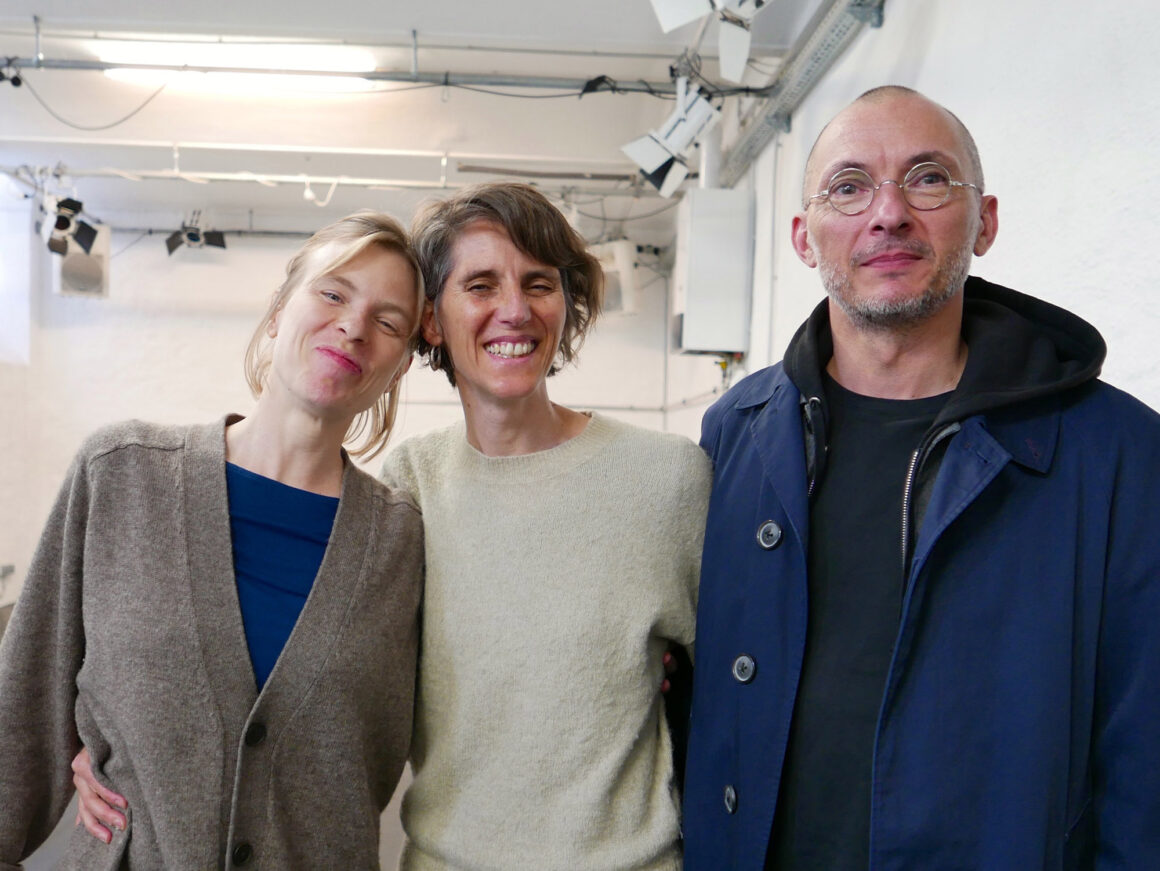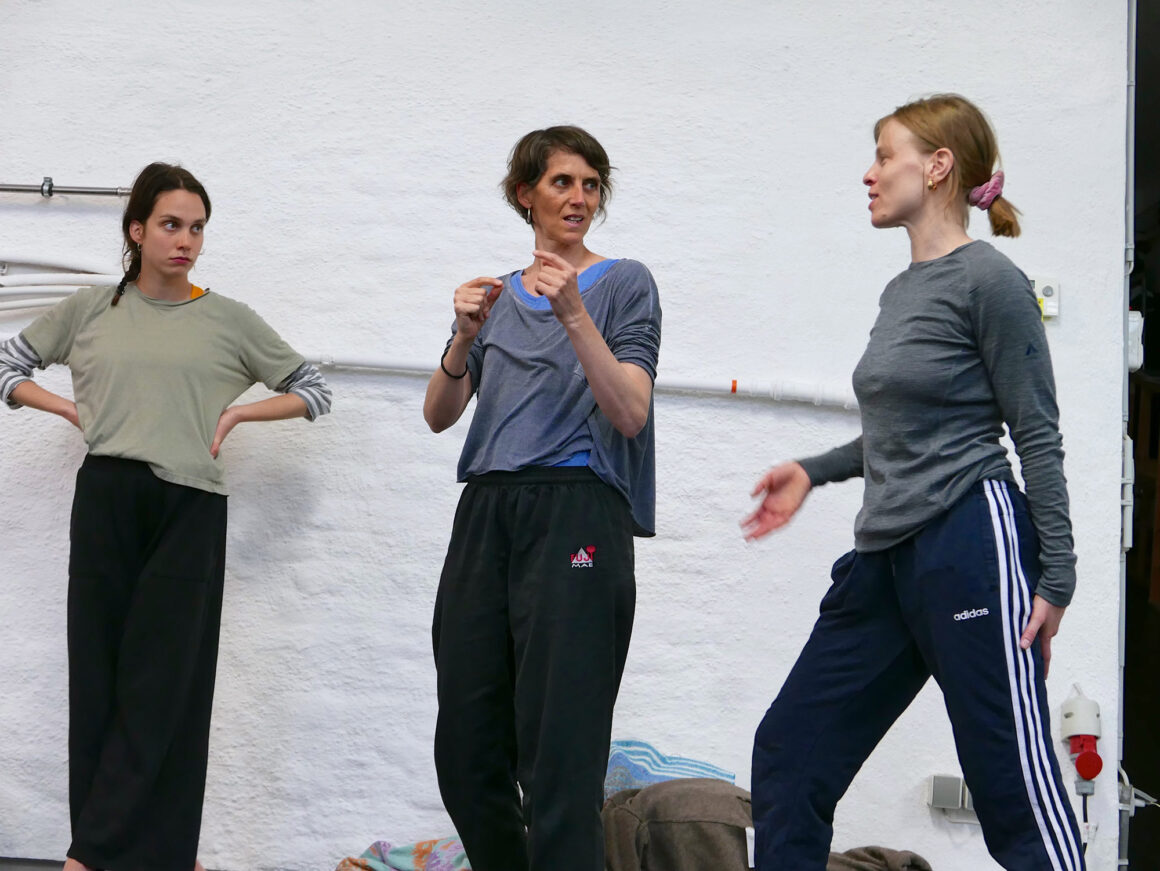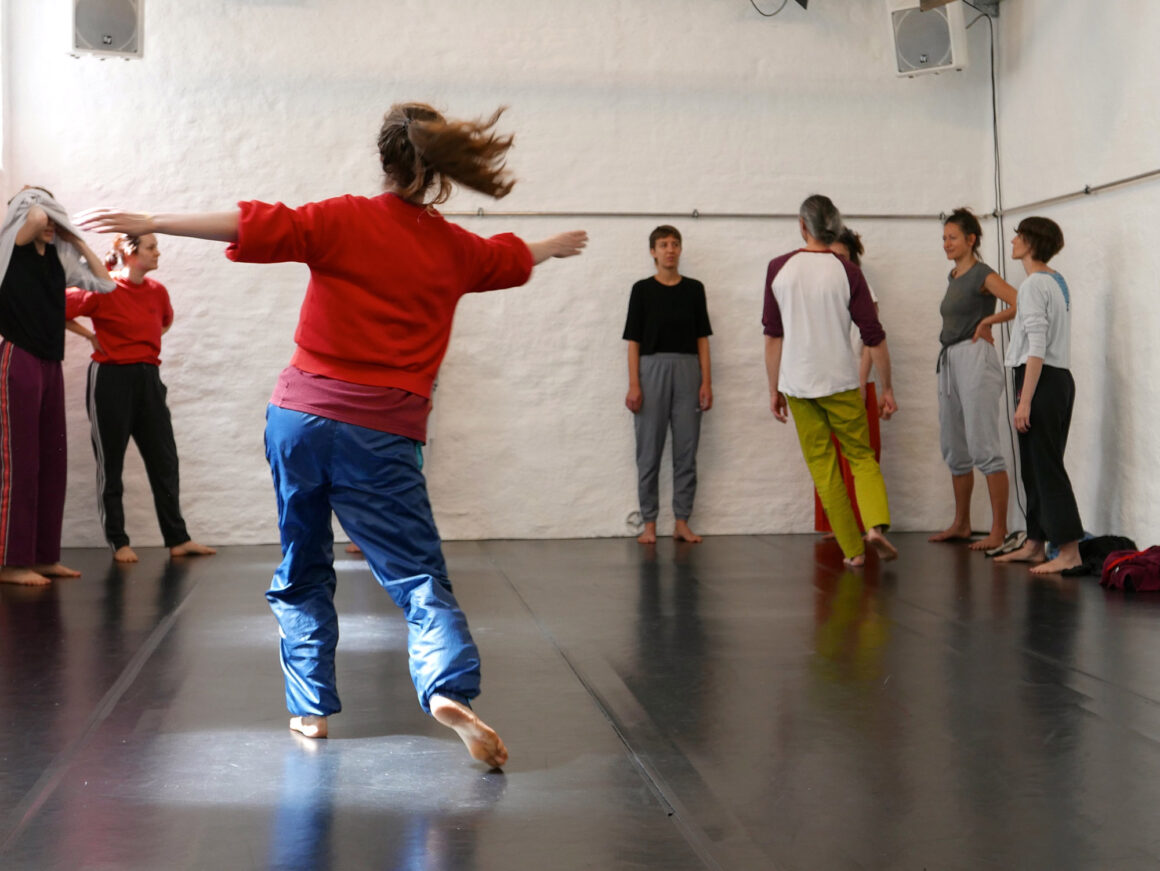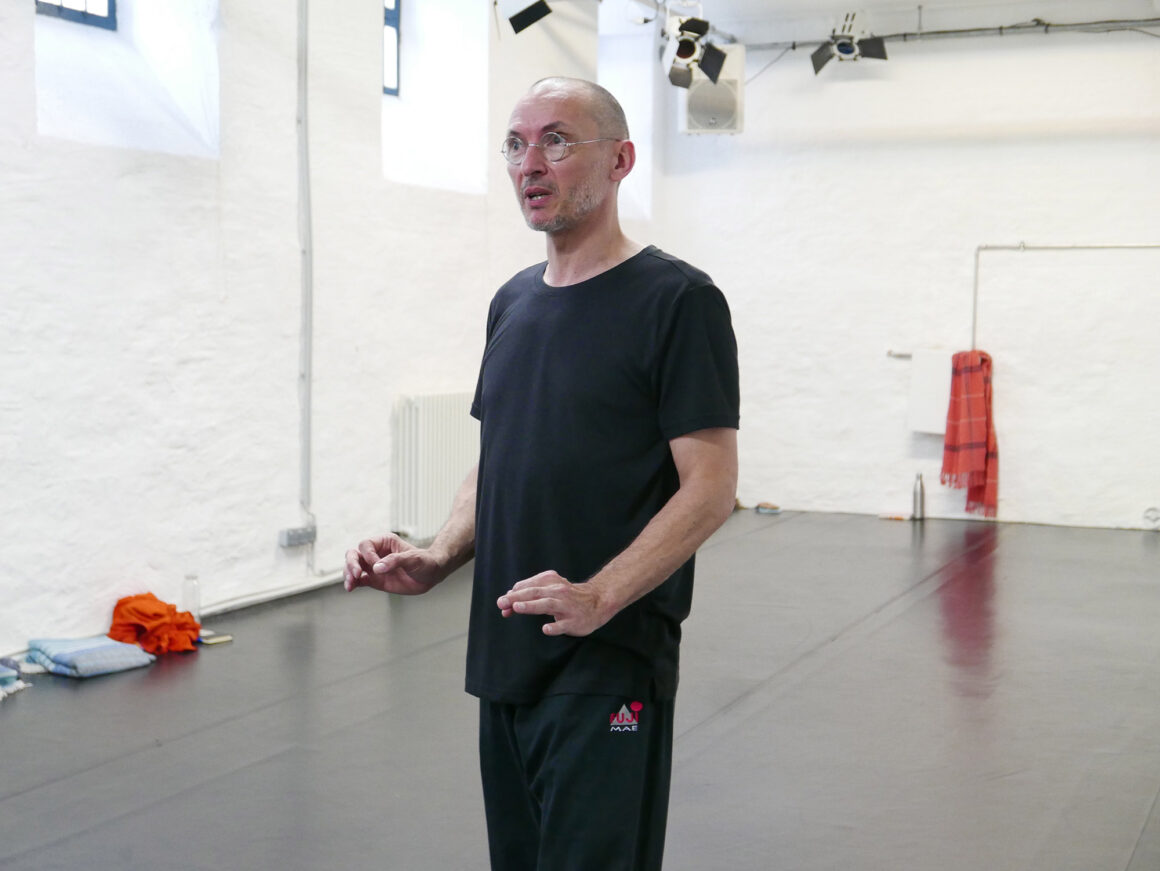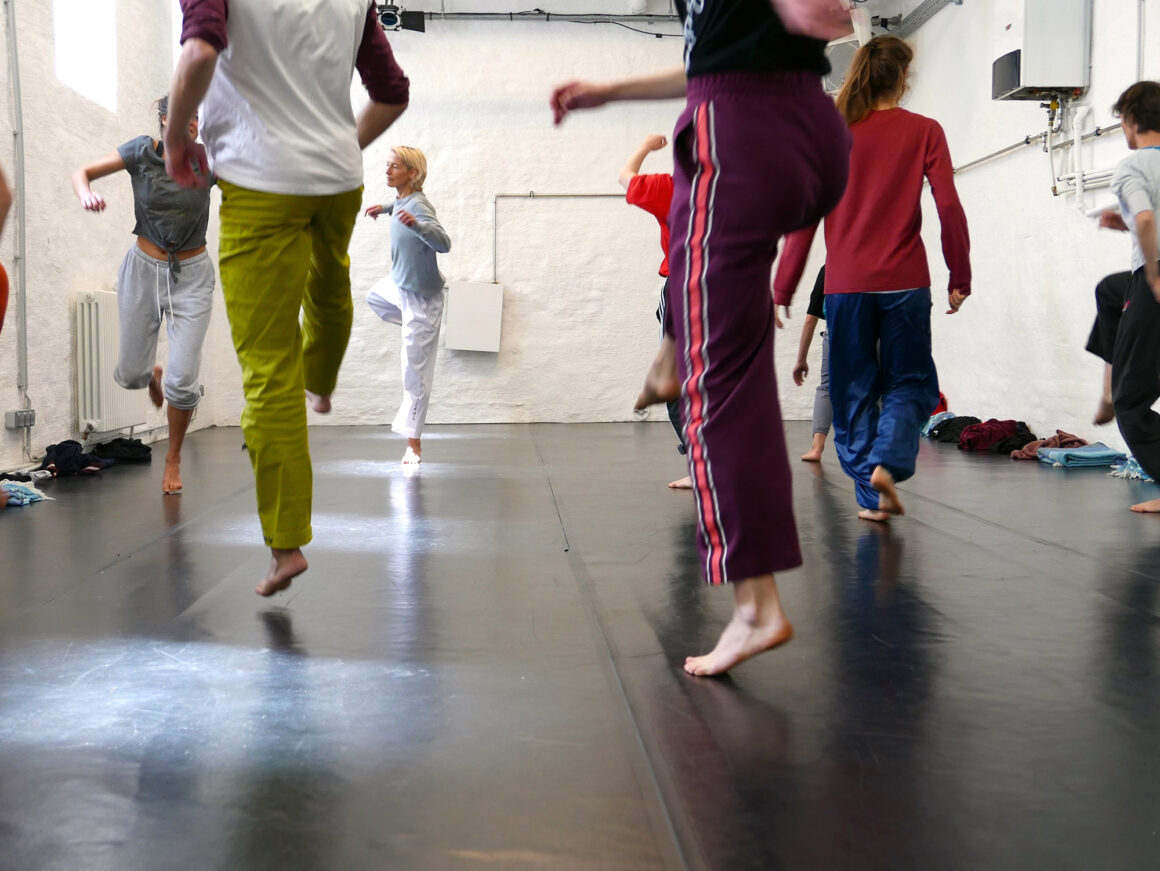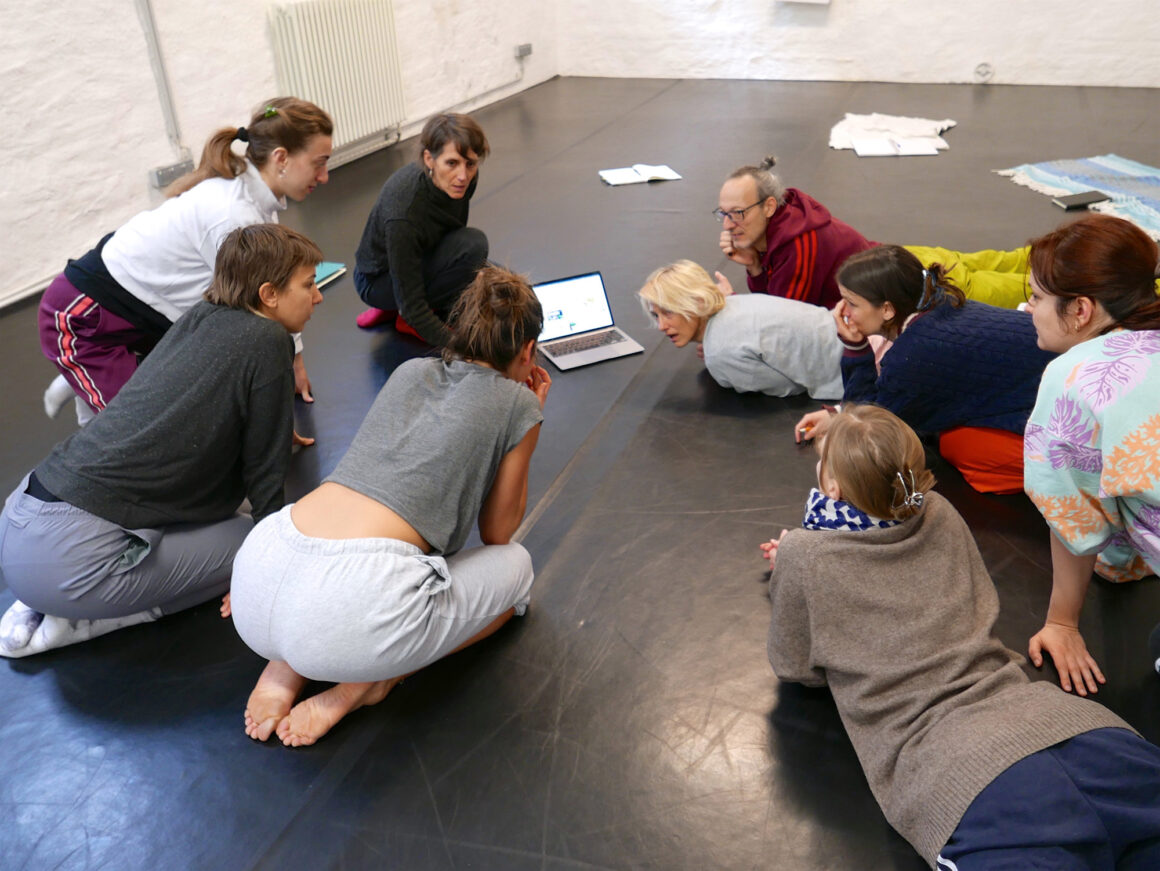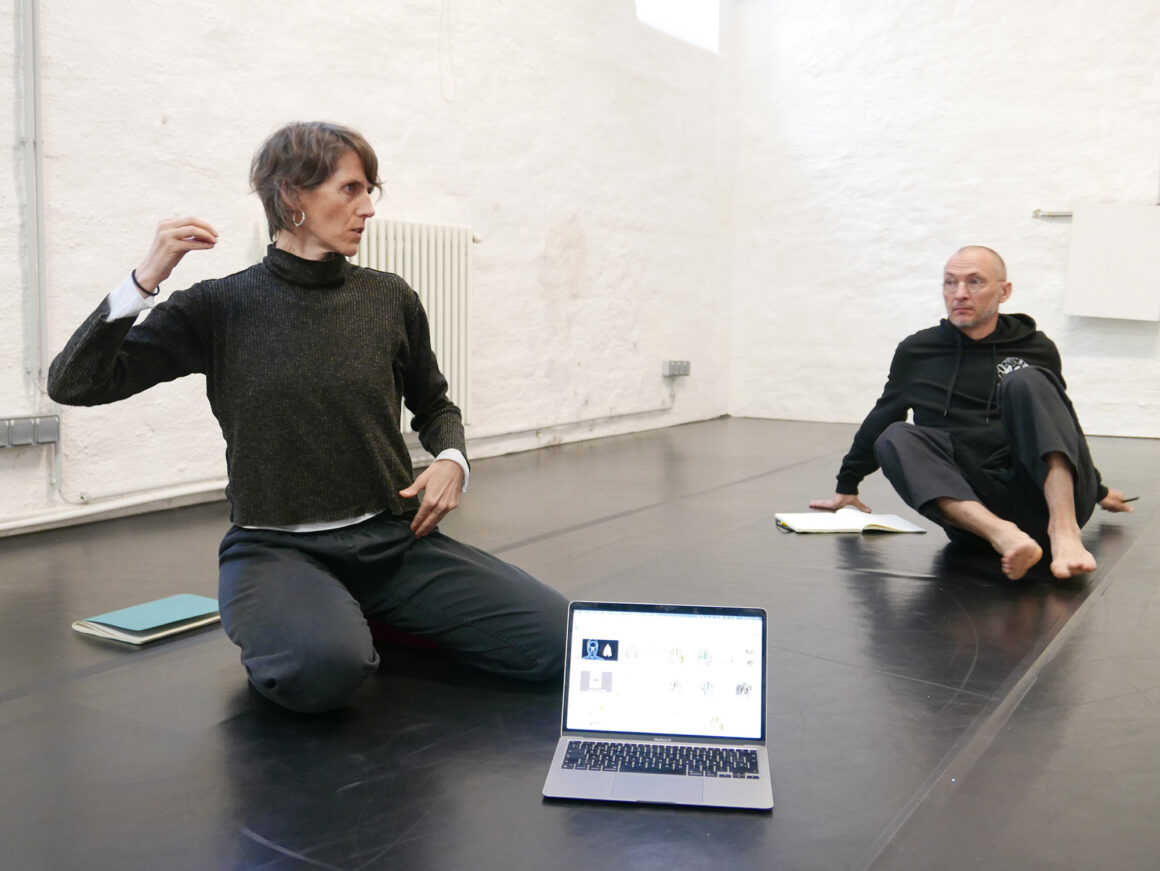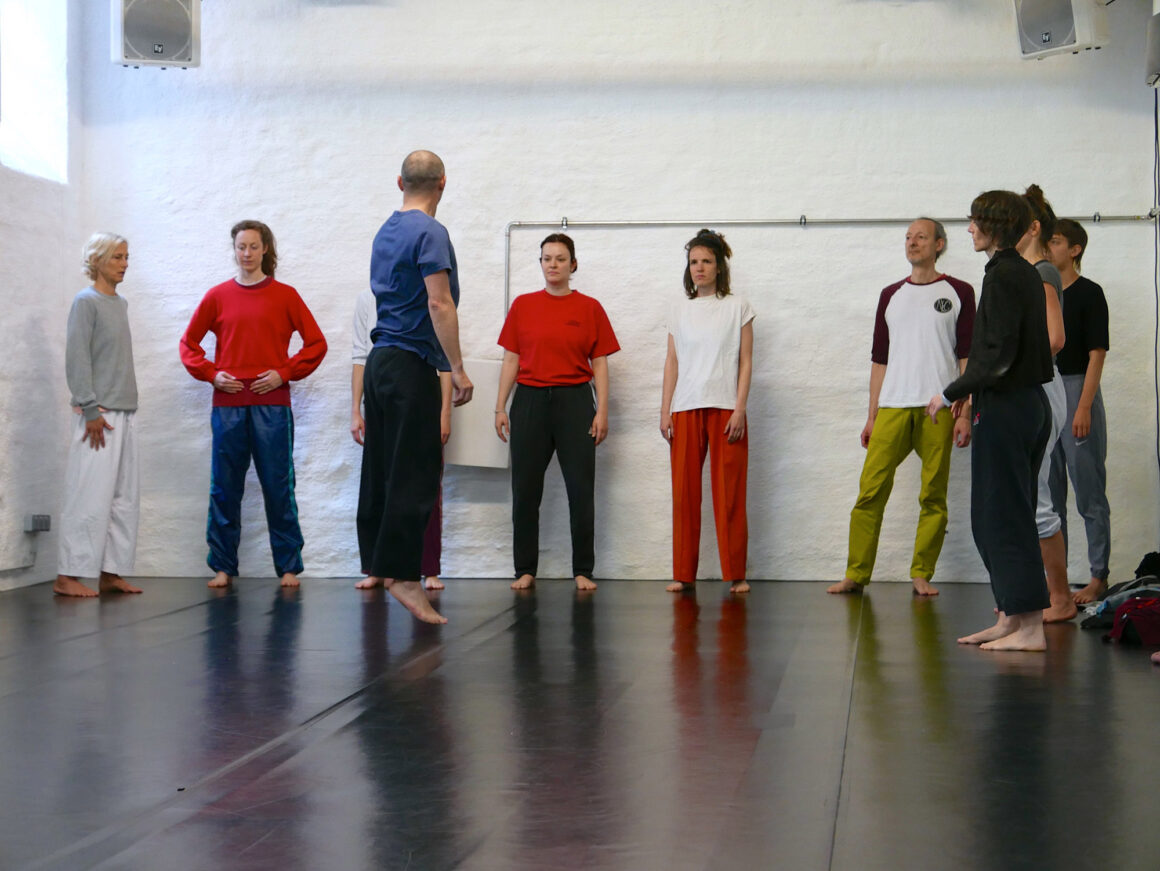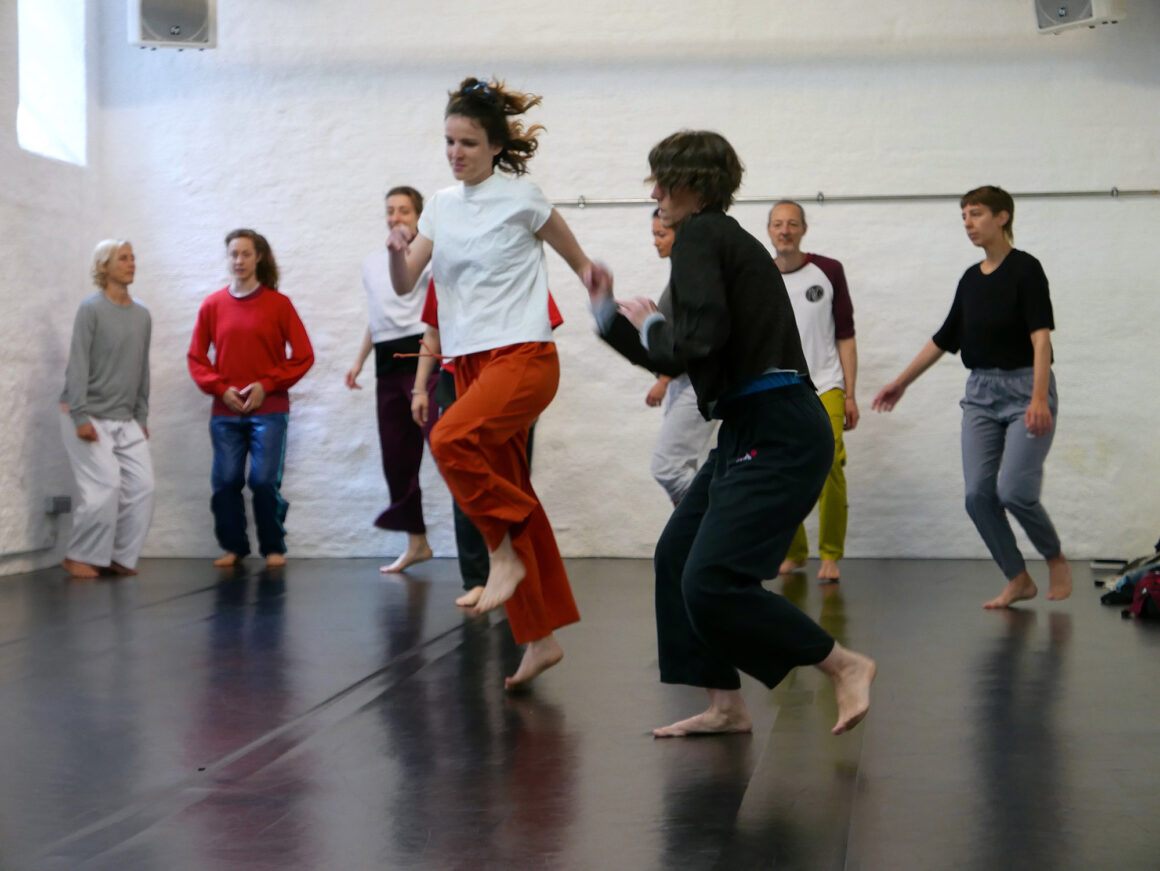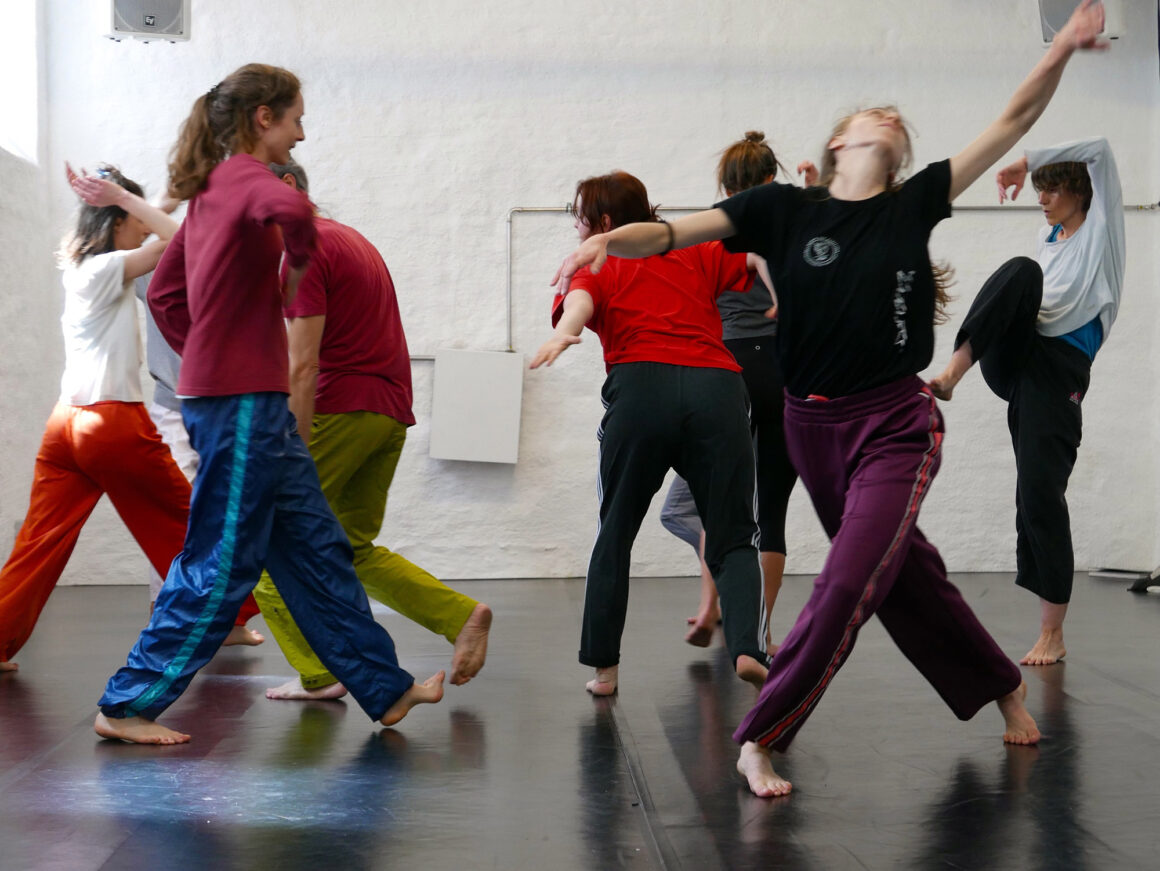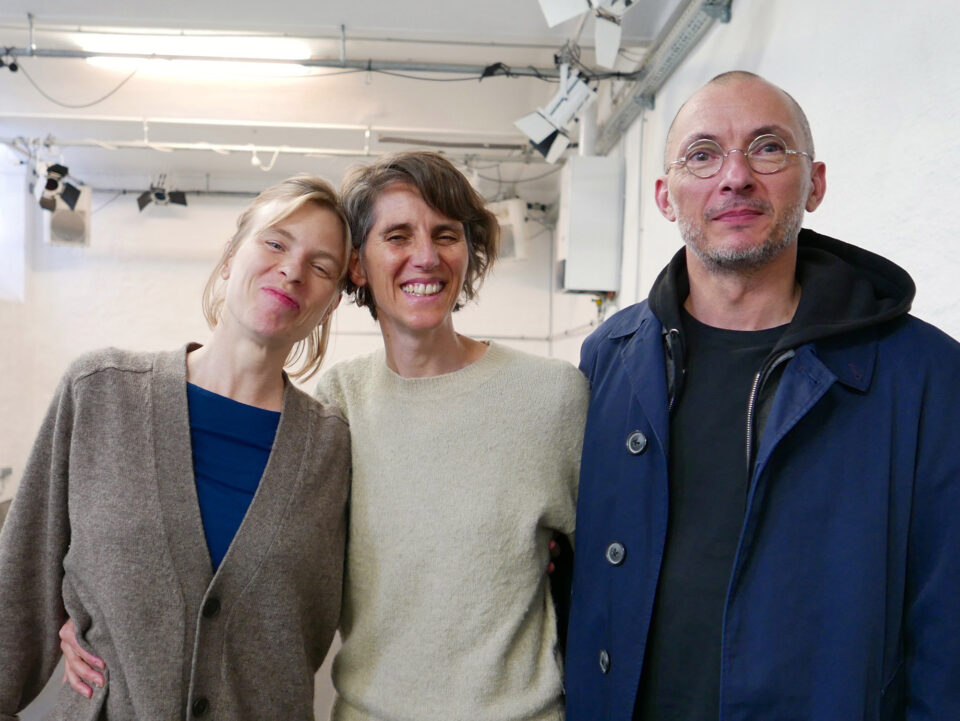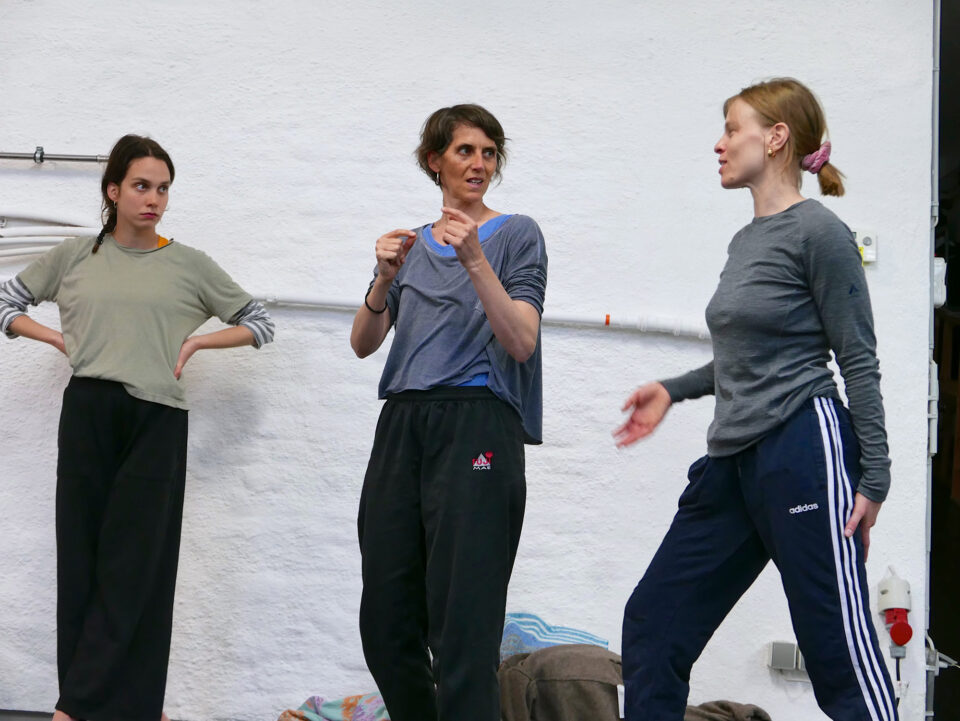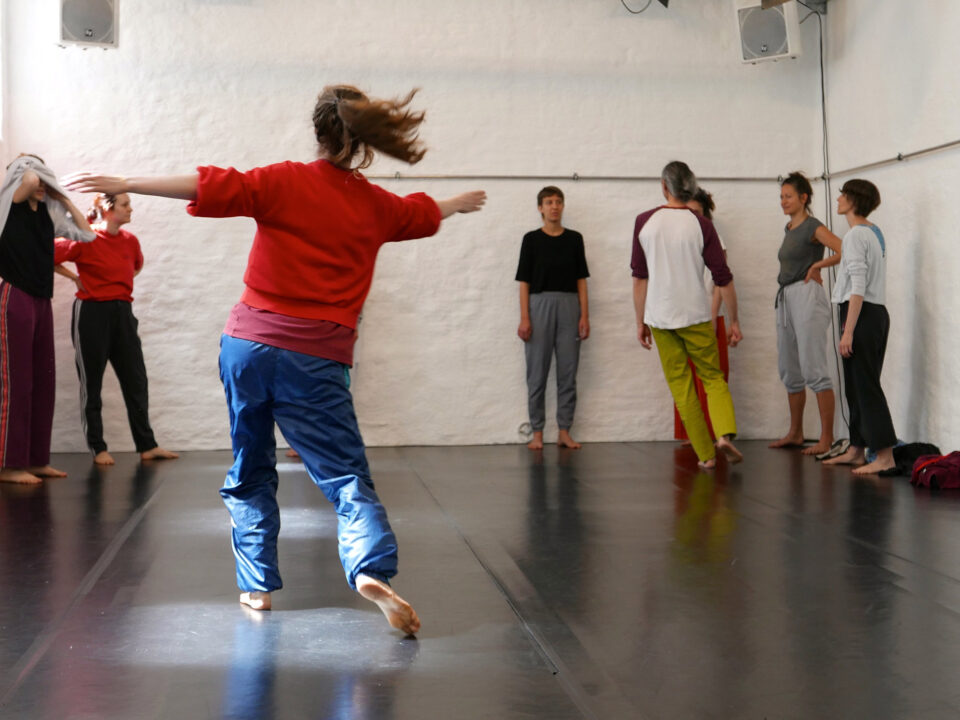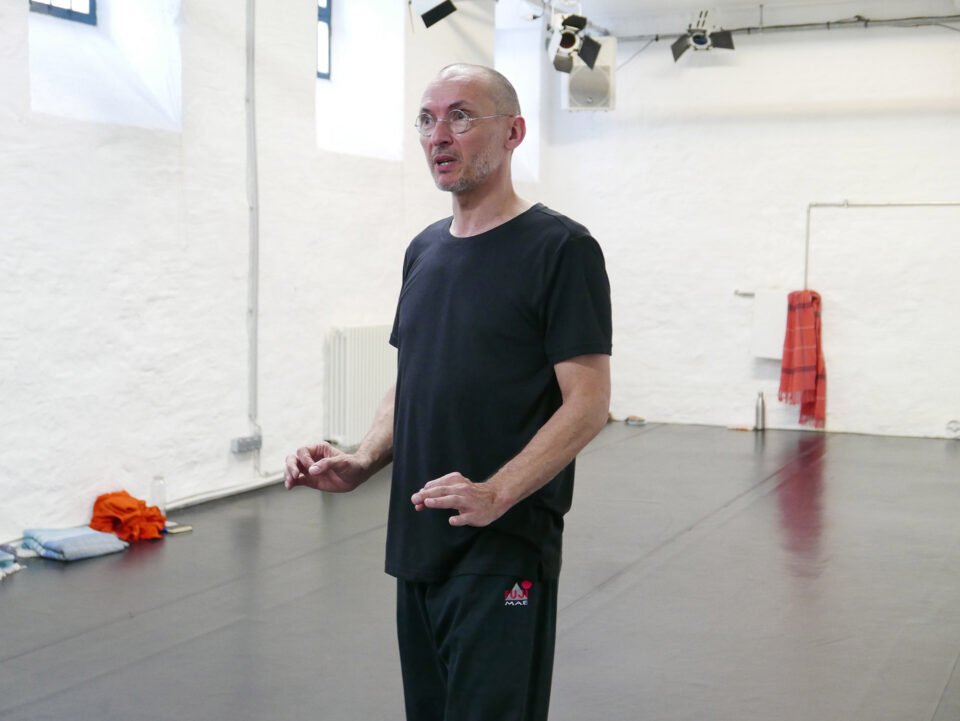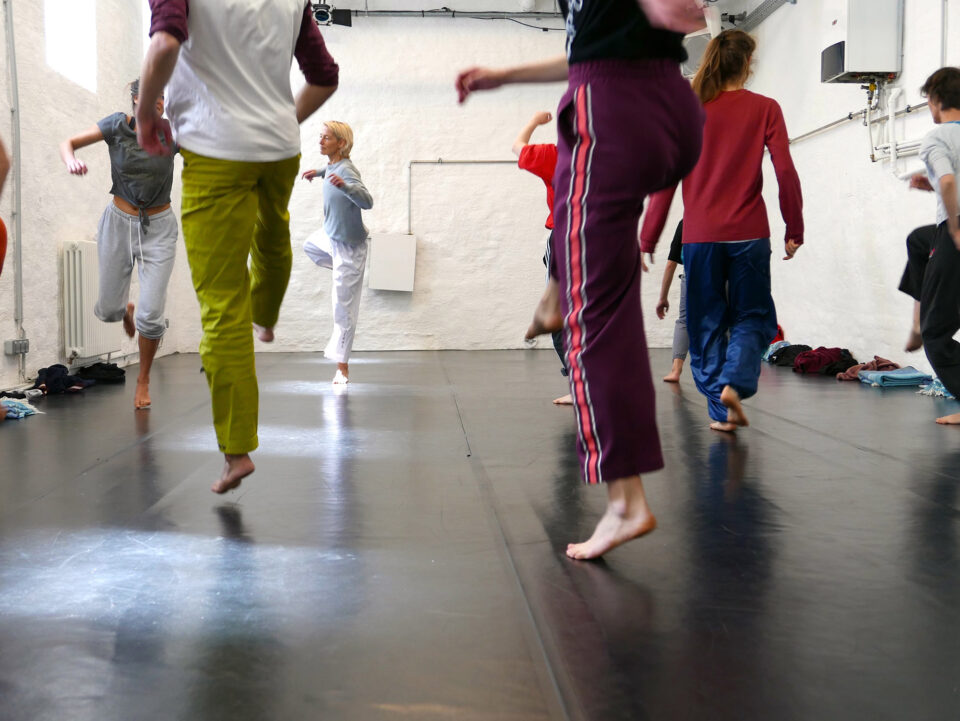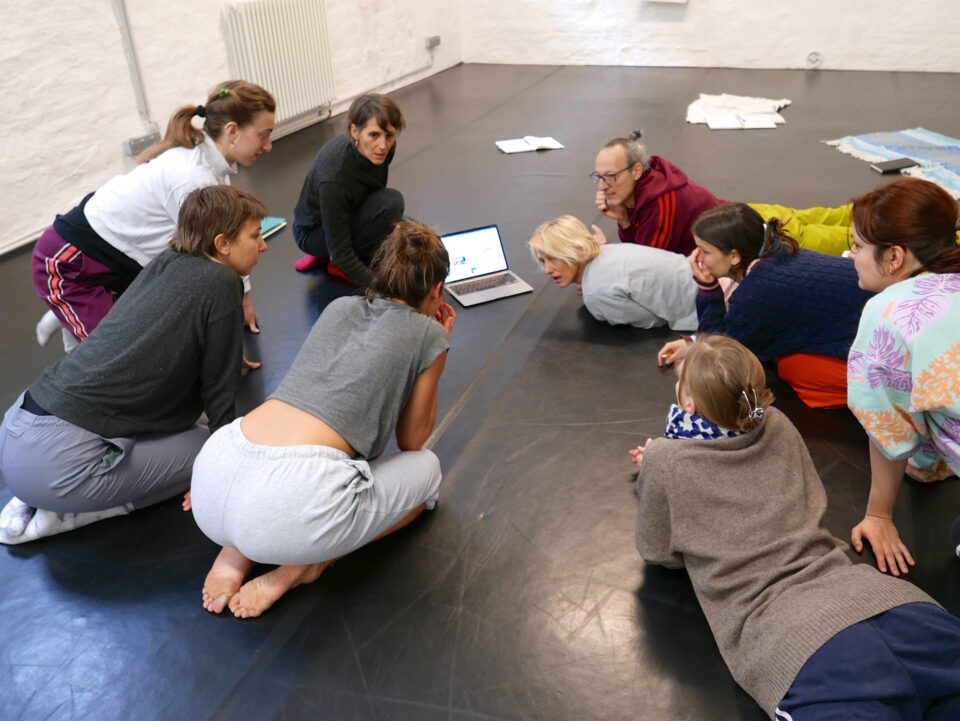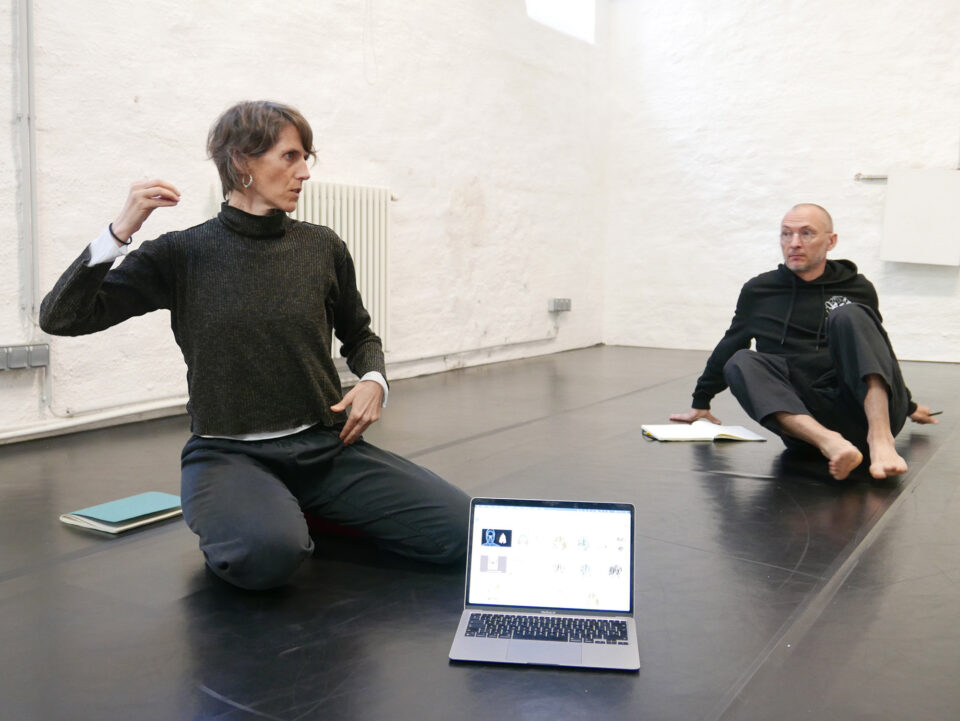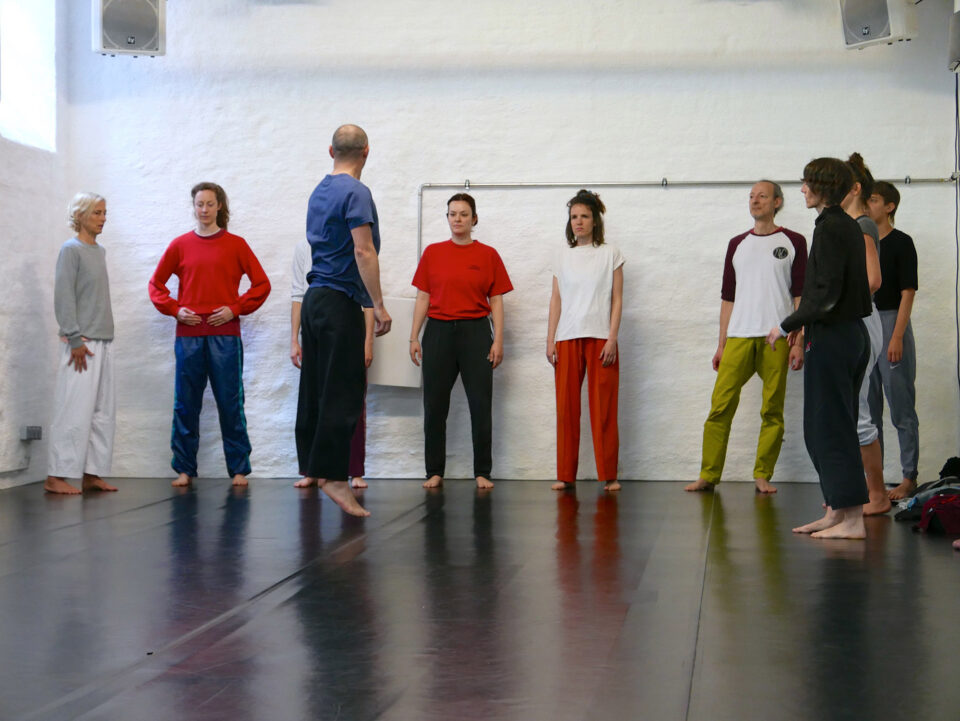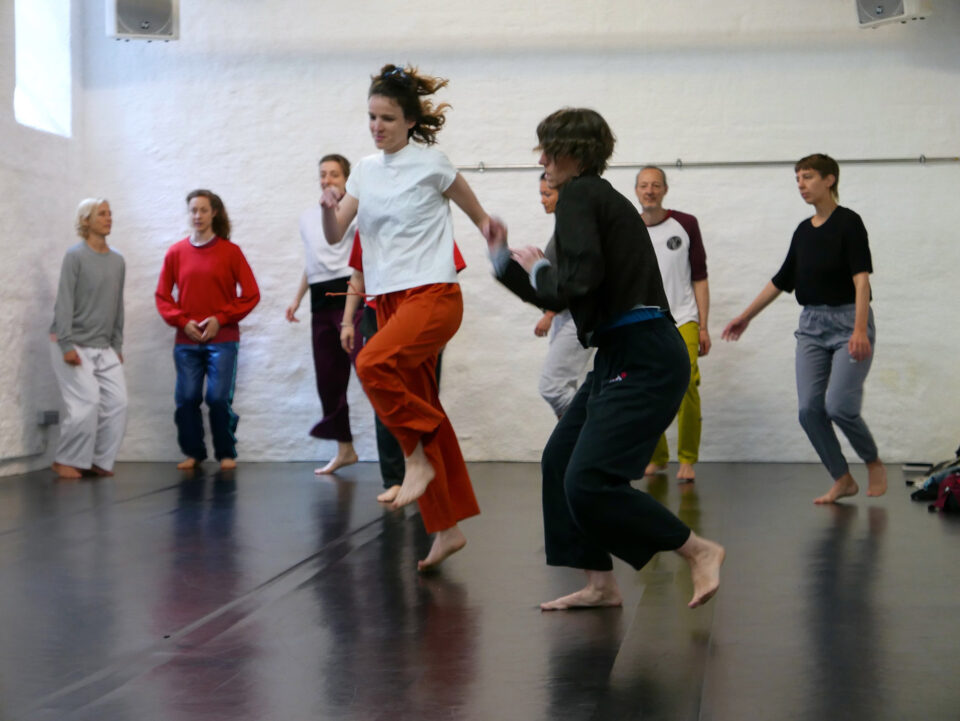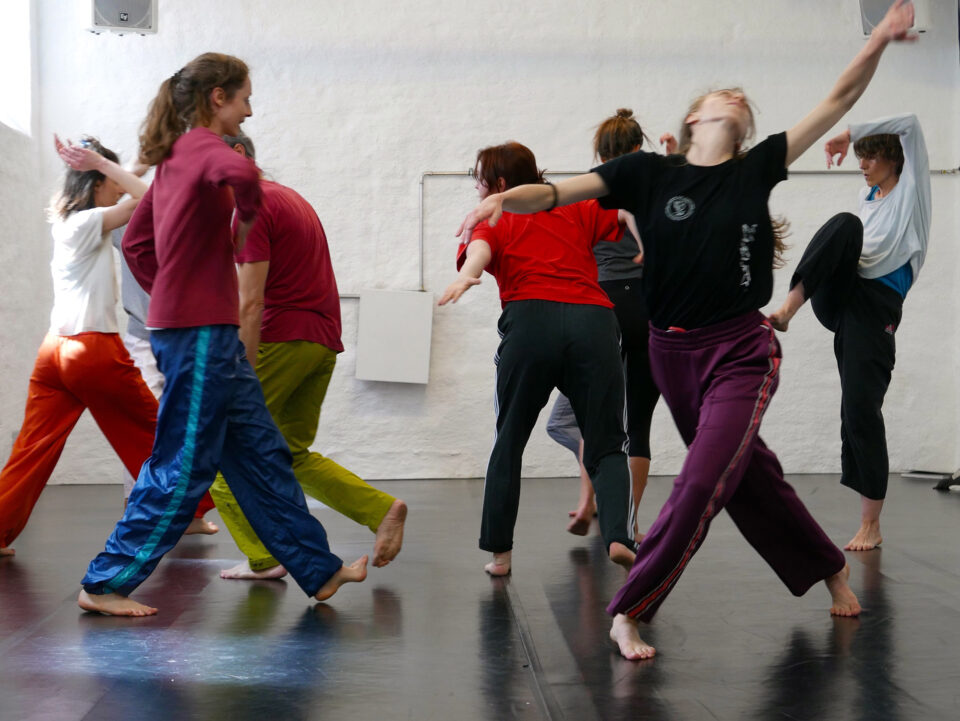“Nobody knows what a body can do” (open workshop) // Eva-Maria Schaller (AT), Pierre-Michaël Faure (FR), Laura Vilar (ES/AT)
Sat 20.4. – Sun 21.4.2024 // 10.00-16.00
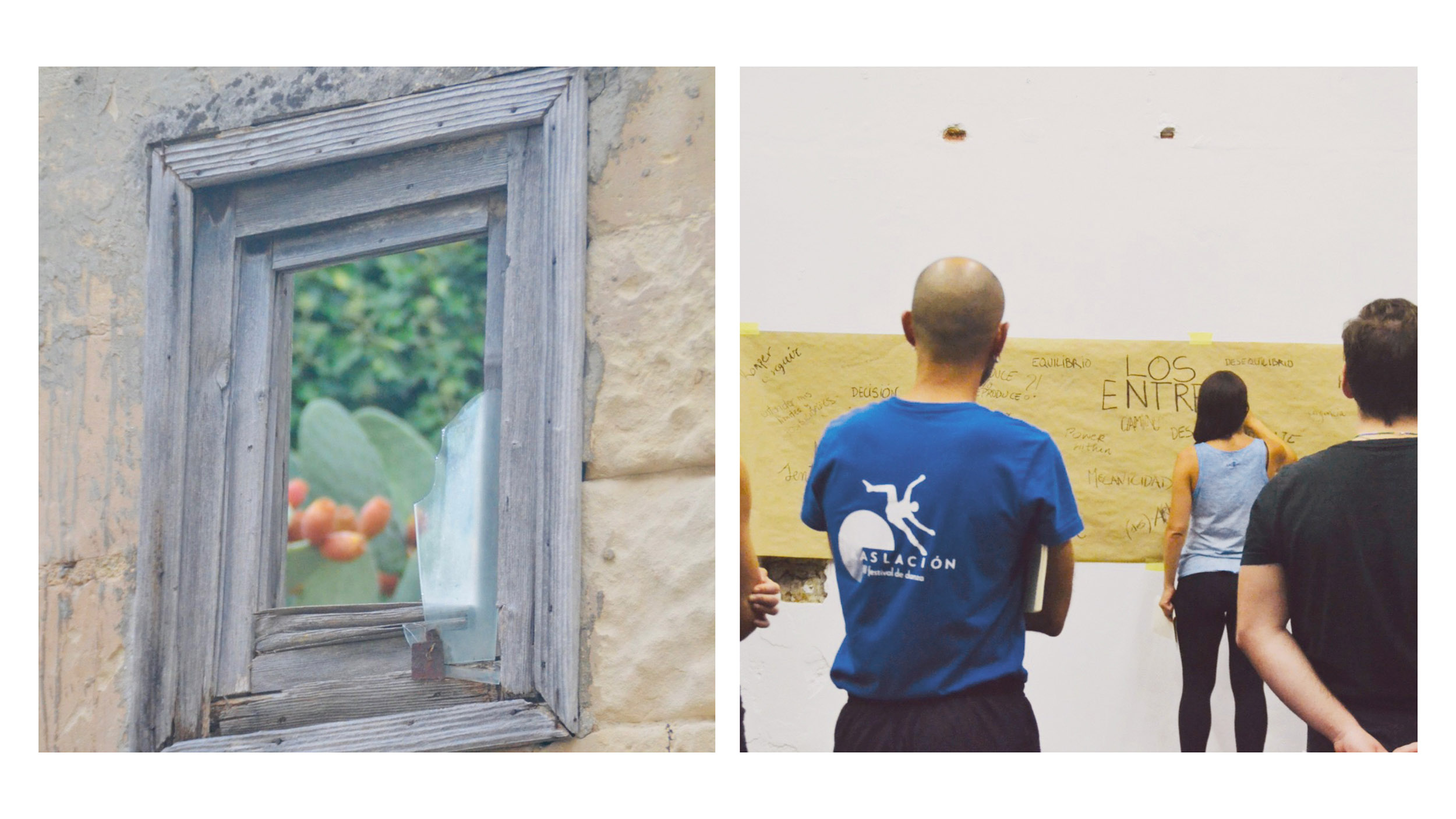
Photo: Triny Reinoso/Laura Vilar
Sat 20.4. – Sun 21.4.2024 // 10.00-16.00
Bräuhausgasse 40, 1050 Vienna // in English language // Fee: at your own discretion between 50 € and 100 € // max. 5 open spots
Registration: imflieger@gmail.com
In the context of SCHULE@Im_flieger 2024 – Artistic Research through movement(s)
What can a body do while dancing? This question, rooted in the affirmation of the philosopher Spinoza “nobody knows what a body can do”, pointing to the unlimited potential of our corporeality, makes us a framework to reflect-experience-feel about what we call “technique” in dance. We wonder if the technical language about movement is still valid today, where are the limits and overflows of dance, and how we manage and share them. Is the pedagogy of forms sufficient for the emancipation of the performers? Is the ability to update a sensitive present-thought-experience technical, or is it perhaps necessary to remove or transform the technical word?
Eva-Maria Schaller, Pierre-Michaël Faure and Laura Vilar – the three of them dancers and facilitators of practices in pedagogical contexts – will share practices and conversations together with the group.
| Sat 20.4.2024 | Sun 21.4.2024 | |
| 10–10.30 | Writing practice _ Laura | Writing practice _ Laura |
| 10.30–12.30 | Practice _ Eva | Practice _ Pierre |
| 12.30–13.30 | break | break |
| 13.30–15.30 | Practice _ Pierre | Practice _ Eva |
| 15.30–16 | Writing practice _ Laura | conversation |
Photos: Anita Kaya
Eva Schaller (AT) is a freelance dancer, teacher and choreographer based in Vienna. Her works deal with female dance-histories, particularly Austrian modernist dance heritages, transmission and embodied memory. In her dance practice she also explores connections of vocality and moving asking how the dancer’s agency and experience can be articulated, with and without words: attempting poetic bridges between movement, meaning, sound and language. evamariaschaller.jimdofree.com
Laura Vilar (ES/AT) is a dancer, choreographer, teacher, and researcher, based in Vienna and Barcelona. She has a PhD degree from the Philosophy department at Universitat Autònoma de Barcelona with an artistic research trough dance(s). She is Co-directing nunArt – artistic research center in Barcelona. She is teacher at the dance pedagogic department at the Institut del Teatre of Barcelona. She has been director of the Professional Training at Area Barcelona dance school from 2017 to 2021. She has taught nationally and internationally at several art centers such as: Bad Lemond’s profi training Münich, CODARTS Rotterdam, Saineb dance co Istanbul, Linz Anton Bruckner University, in Spain: Cobosmika seeds, nunArt Barcelona, Area, Varium, La Caldera; Back Pulver feedback training Vienna, Im_flieger Vienna, among others. She has danced in several companies as: Compagnie Taffanel based in Montpellier (2003-2010), Cobosmika company / Russell Maliphant (2006-2013) toured internationally, Hermanas de Castro, Trànsit (2000-2001), La Inconnexa 2002-2003, Lanònima Imperial (2004), Comediants, Salvatge cor (2006-2008) or Dance Theatre of Ireland (2010), a. o. Her latest works as a choreographer: Tentativas de (des)aparición (2022), #quéhayenelmundo (2021), Voyager (2019-2020), Sanjiao (2017). www.lauravilarblog.wordpress.com, www.guinardo.nunartbcn.com/en
Pierre-Michaël Faure (FR) is an interpreter, choreographer, and pedagogue, Pierre-Michaël trained from a very young age in classical ballet at the Perpignan Conservatory and later at the Marseille Opera School. He opted for contemporary creation and began his career as a performer in several national and international companies, such as the Ballet Atlantique Régine Chopinot or the Compagnie Taffanel. He is currently a teacher in France and abroad, where he develops a specific work with children and adults. Through the foundations of contemporary dance, he implements a sensitive approach, which considers placing “the person” at the center of the work of interpretation, research, and improvisation.

